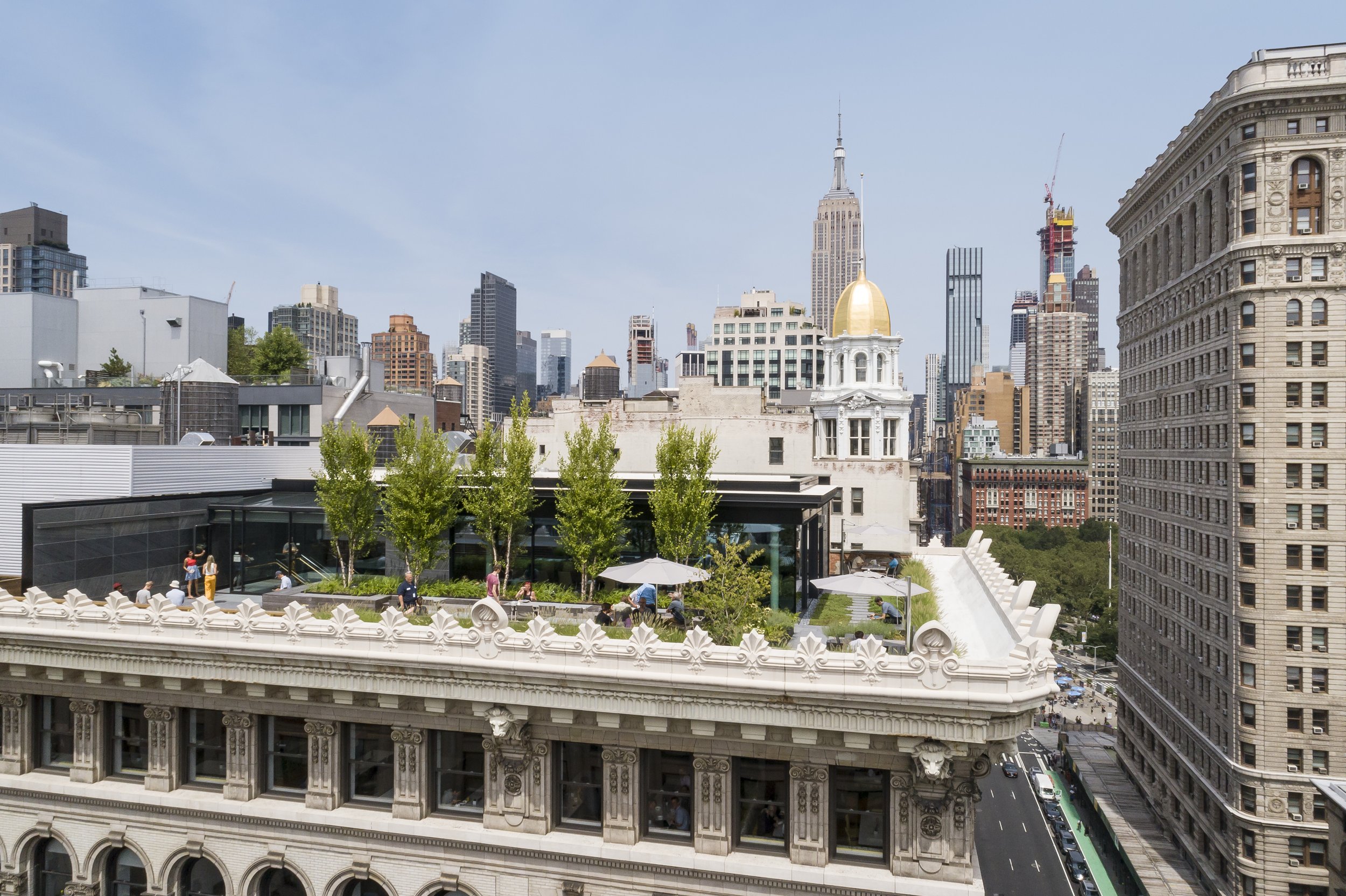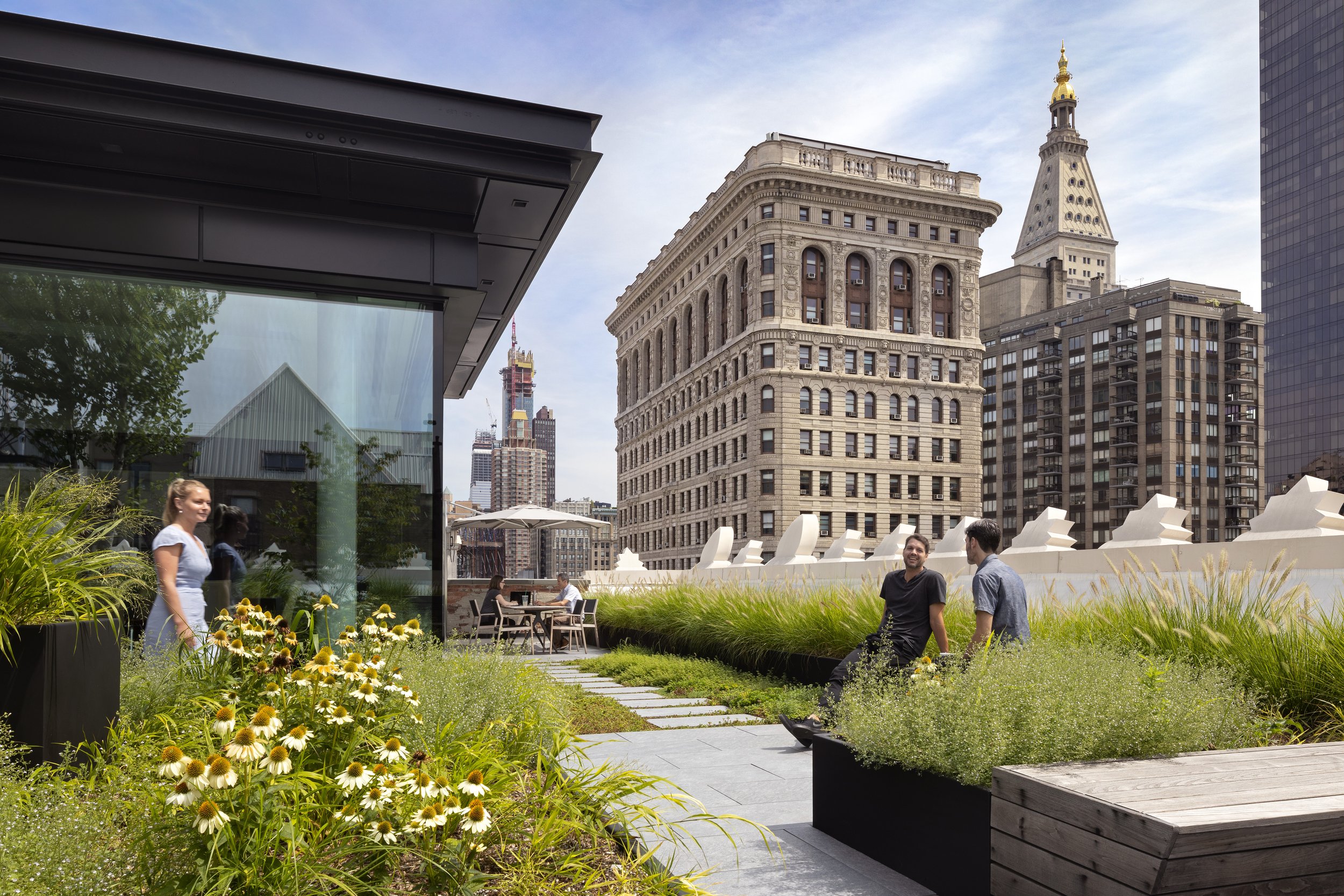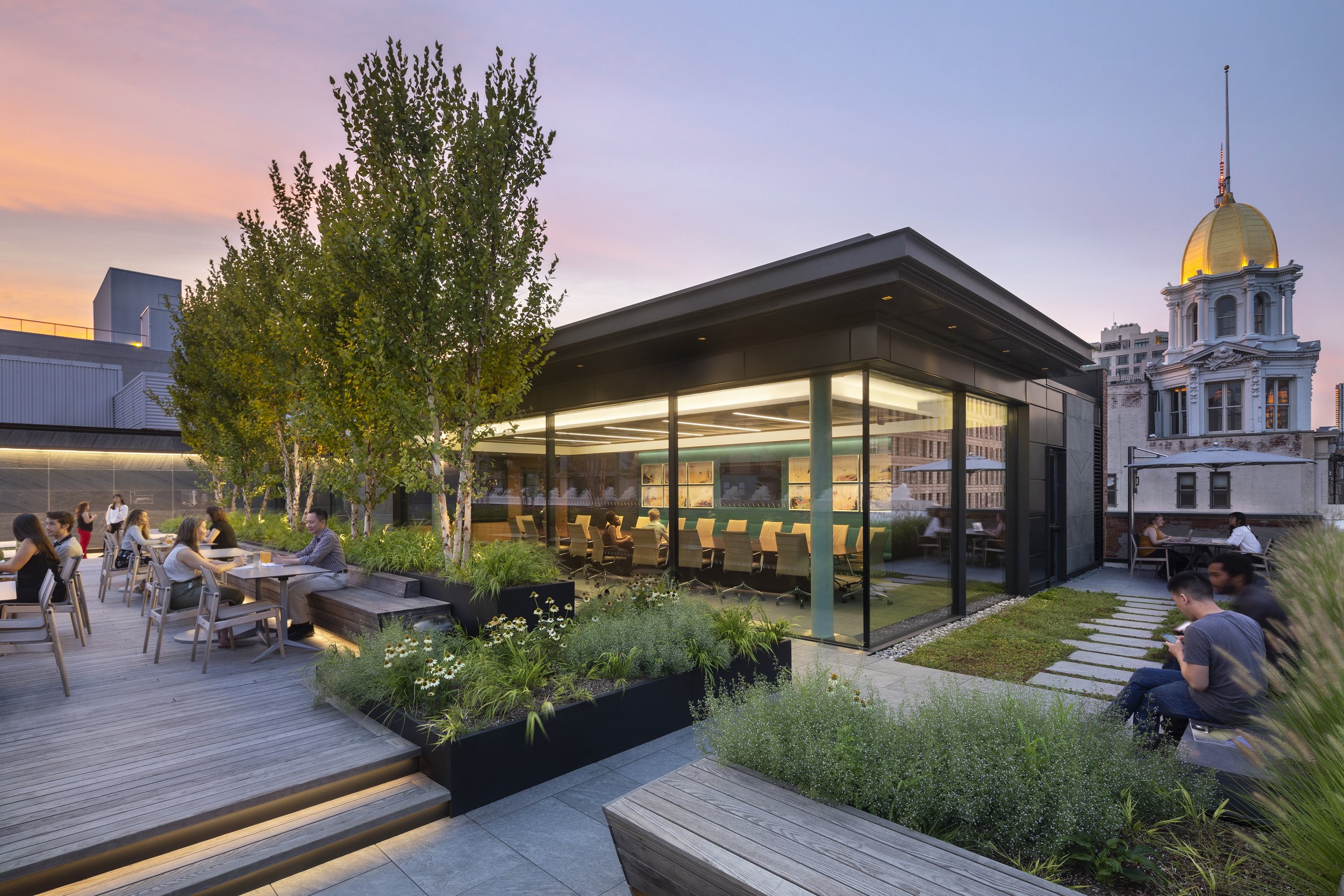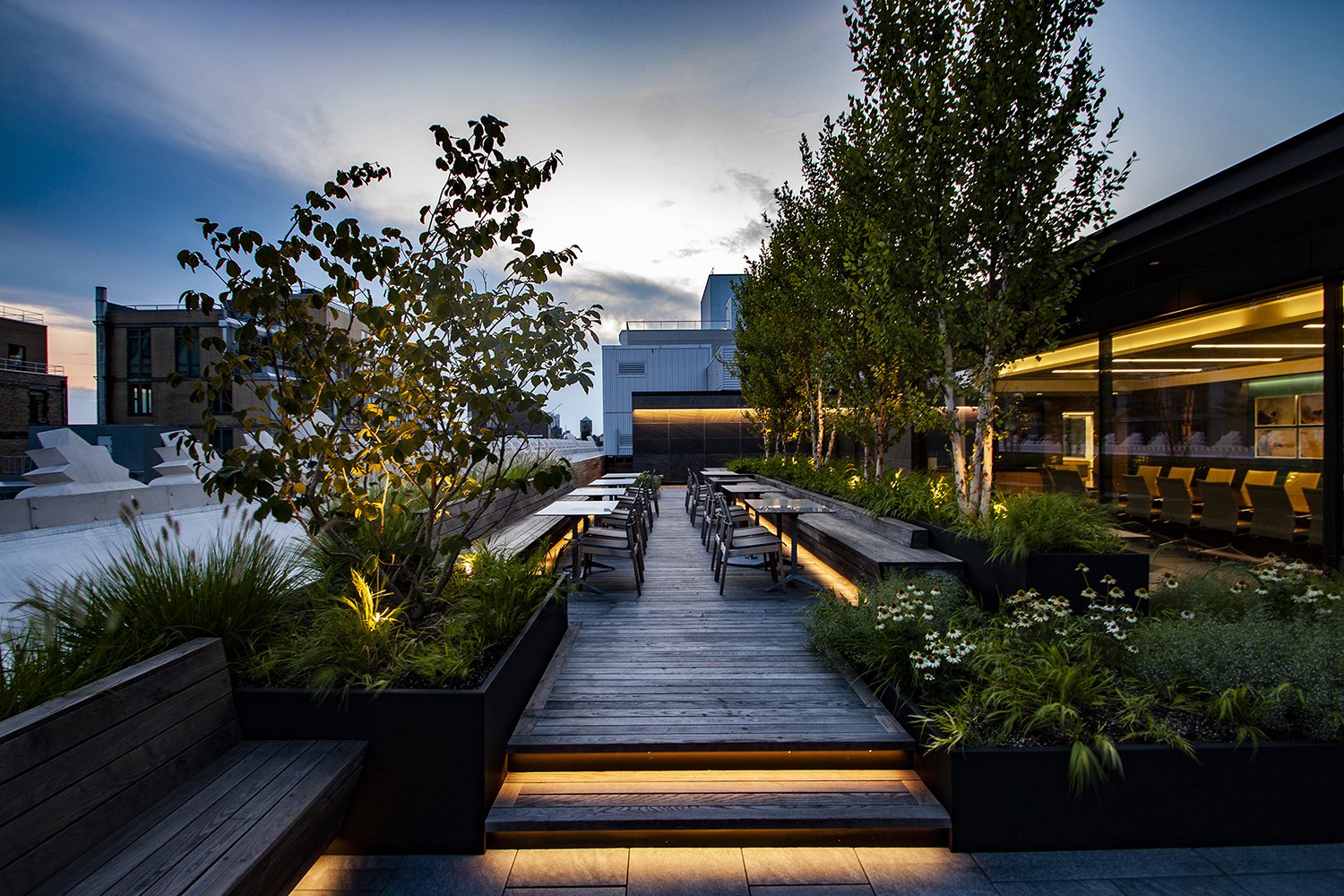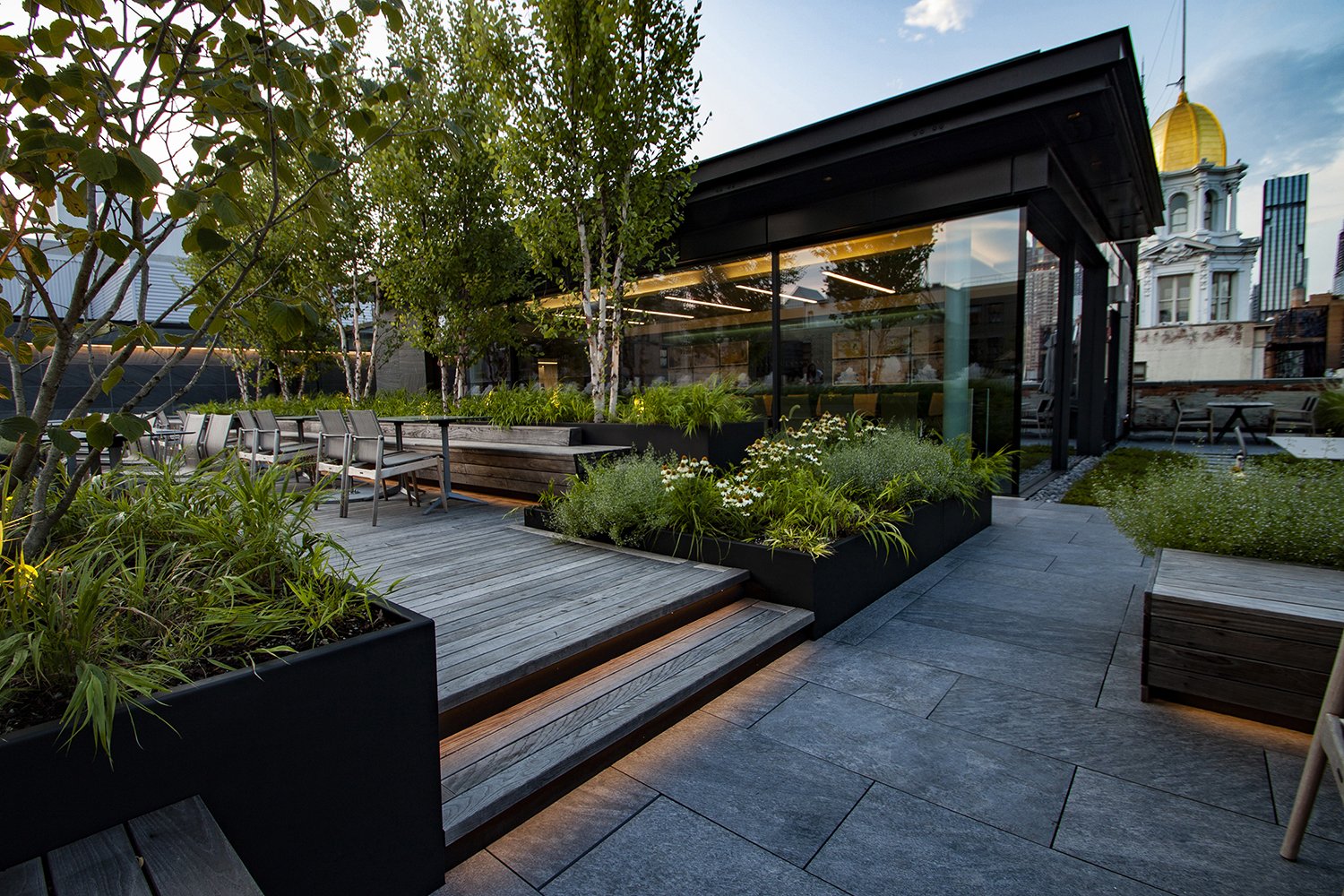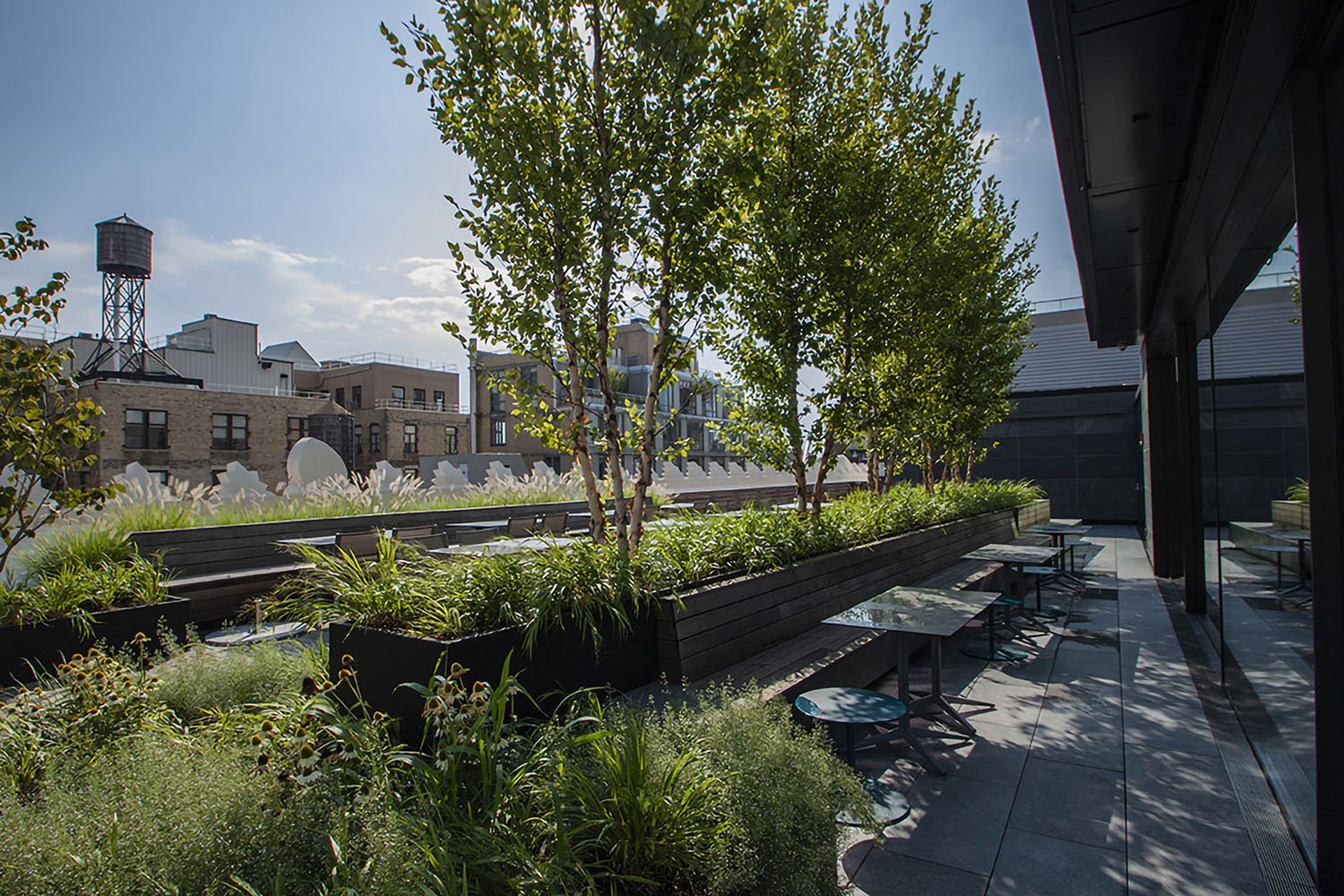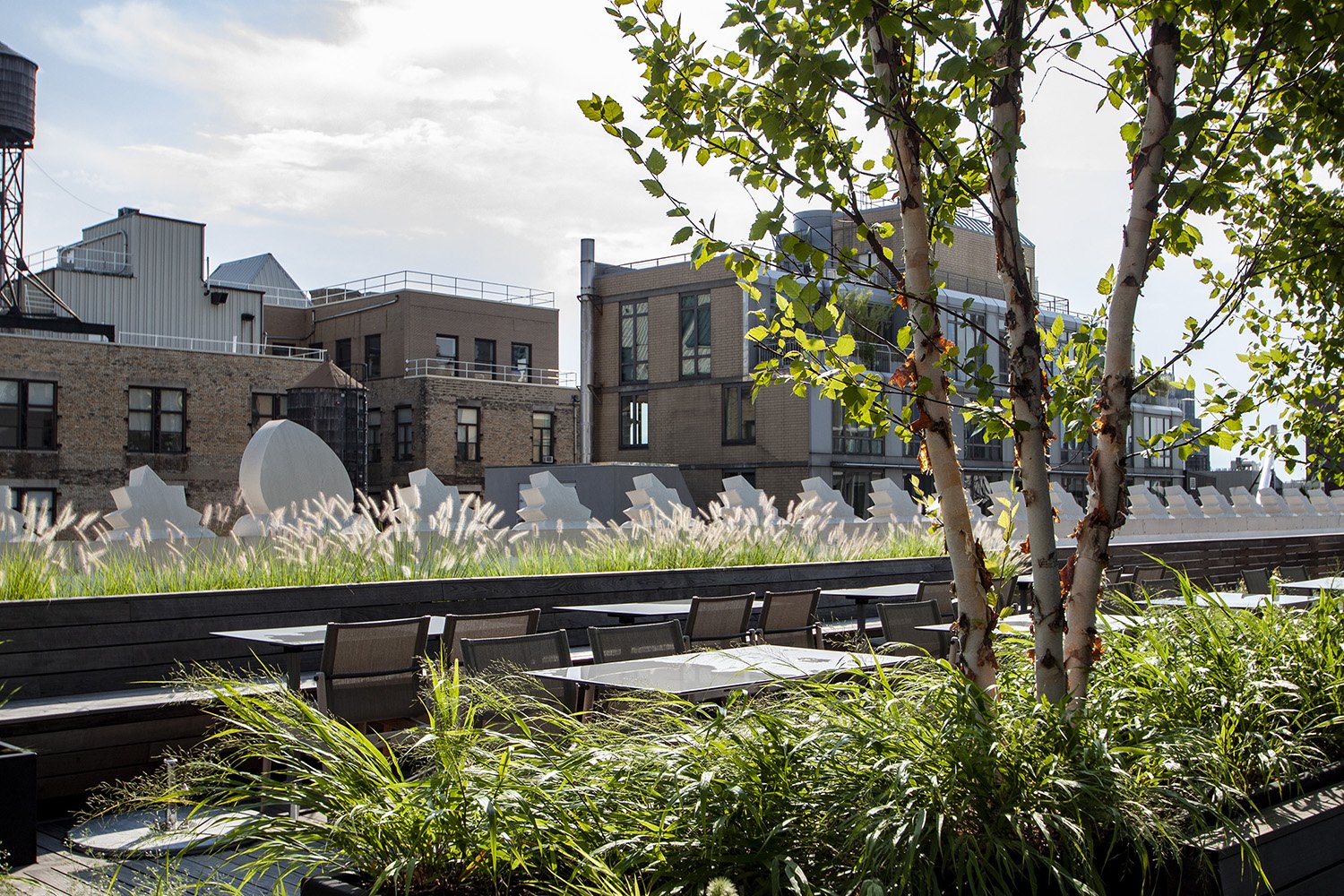Spring has returned in New York City, and with the warmer weather brings the return of cityscape gardens, terraces, and rooftops. An escape from the hustle and bustle of the busy Manhattan street, more and more these outdoor oases are being incorporated into NYC’s built environment.
In honor of the start of Spring, we are taking a look back at an extraordinary rooftop project at The Flatiron Institute, which we completed in partnership with Perkins Eastman, Dirtworks Landscaping and Blondie’s Treehouse.
Copyright: Chris Cooper
The Flatiron Institute, named after the architectural focal point of the historical neighborhood, is a research division of The Simon’s Foundation, leading the advancement of computational science in astrophysics, biology, mathematics and quantum physics. A research hub for some of the most recognized and accomplished scientists in the world, the institute promotes the collaboration of scientific fields and theory.
Collaboration also plays a key role in the design and build of the research center-The Flatiron Institute’s 2,100 sf rooftop garden and interior plantings display the integration of the natural world and the office environment. Read more on the project below:
Learning Environment- The Flatiron Institute’s rooftop features a central conference room, constructed with glass partitions for an unobstructed, 360 degree view of Fifth Avenue and surrounding neighborhood. Layers of built-in benches and tiered amphitheater style seating reference the grand stairs of college campuses and higher learning institutes. The outdoor learning rooms feature chalkboards and areas for stargazing.
Sustainable Systems- Green roofs are a sustainable solution in moderating the heat island effect by providing shade and removing heat from the air through plant evapotranspiration, reducing the temperature of the roof surface and the surrounding air. Green roofs absorb heat and act as insulation for buildings, reducing energy needed to provide cooling and heating. In addition, the Flatiron Institution rooftop utilizes enhanced tree pits and planters engineered to recycle and absorb rainwater.
Vibrant Landscape- The garden is thoughtfully created to seamlessly transition between seasons, from spring blooms to groves of birch trees which offer shade and vibrant fall foliage. Swaths of hakone grass under planting the trees create a cascading effect and softens the edges of blackened steel planters.
The Flatiron Institute's rooftop garden underscores the importance of wellness and connectivity in the work place through the use of biophilic design and construction.
Read more about our work for research institutions HERE or get in touch with a project consultant by clicking the button below
Photos courtesy of: Dirtworks Landscape Architecture

